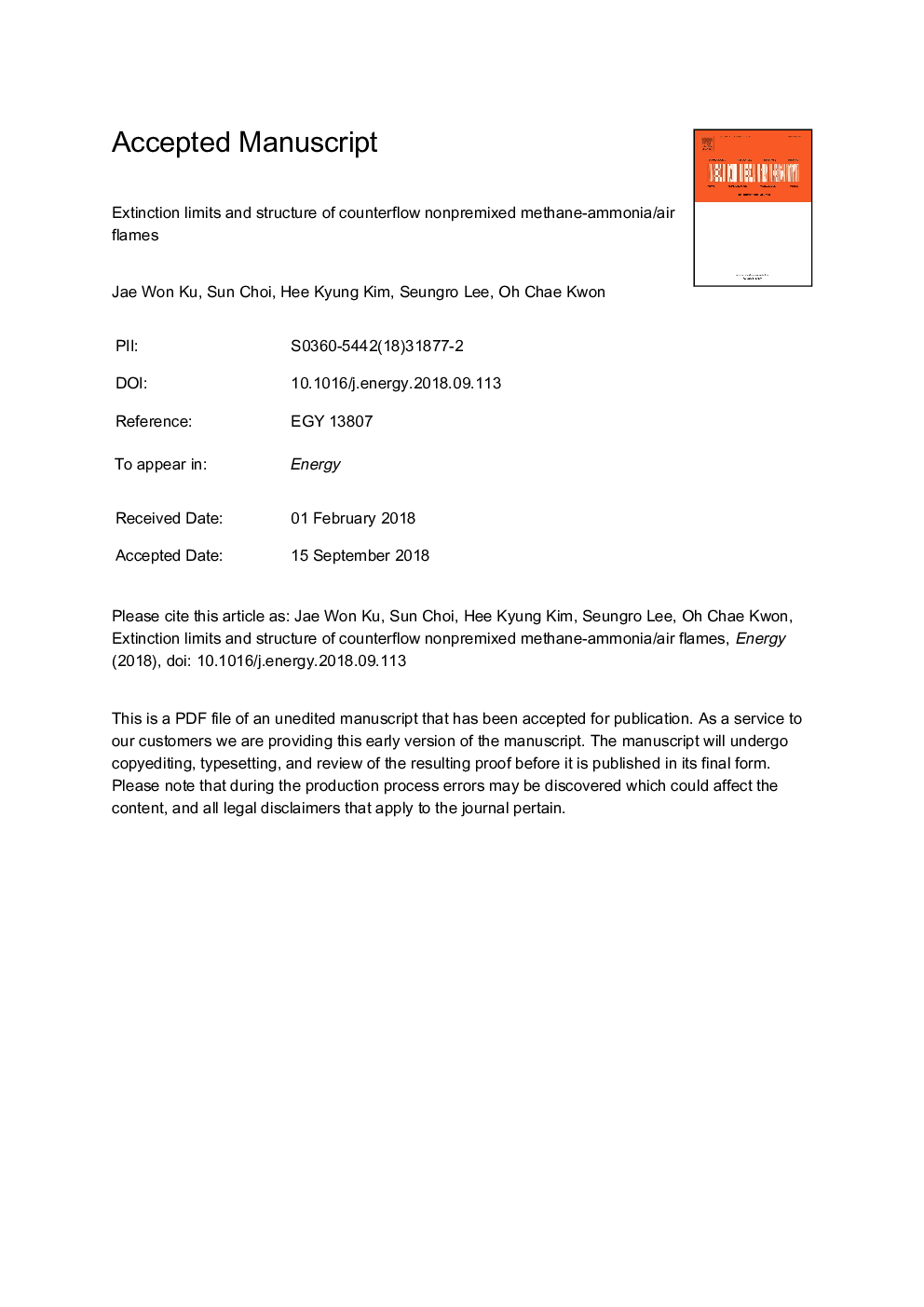| Article ID | Journal | Published Year | Pages | File Type |
|---|---|---|---|---|
| 10156233 | Energy | 2018 | 32 Pages |
Abstract
An experimental and computational investigation on the fundamental combustion characteristics of methane (CH4)-ammonia (NH3) blends is conducted to confirm their potential as a clean fuel with low carbon dioxide (CO2) emissions and determine their reasonable burning conditions, considering counterflow nonpremixed CH4NH3/air flames. Extinction limits and structure of the nonpremixed CH4NH3/air flames are measured and predicted. Results show that flames gradually become orange and the flame thickness increases with NH3 addition, compared with the pure CH4/air flames. Also, flames can sustain less NH3 at high strain rates. Compared with the pure CH4/air flames, CH4NH3/air flames exhibit remarkable reduction of CO2 emissions with moderate reduction of combustion stability limits and no remarkable temperature drop in the flame, supporting the potential of CH4NH3 blends as a clean fuel with low CO2 emissions. However, additional investigations for reducing the enhanced NOx emissions mainly via the fuel NOx mechanism with NH3 addition are needed. Finally, the quantitative discrepancy among the present measurements and predictions merits the development of a new reaction mechanism which is optimized for the reaction of CH4NH3 fuel blends and air.
Related Topics
Physical Sciences and Engineering
Energy
Energy (General)
Authors
Jae Won Ku, Sun Choi, Hee Kyung Kim, Seungro Lee, Oh Chae Kwon,
